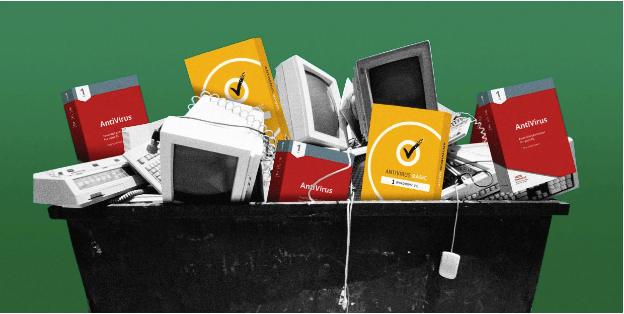By Amber Martin
A staggering 2.3 million individuals die each year due to work-related accidents or illnesses. These sad figures translate into a heart-wrenching daily toll of over 6,000 deaths.
But workplace safety is not just about shielding your employees from harm. It’s about cultivating an environment steeped in trust and assurance.
This article delves into the importance of implementing workplace safety best practices. We’ll spotlight effective measures for fortifying systems against hazards and potential breaches.
Decoding Workplace Safety
Employers bear a responsibility to ensure workers operate in a secure space. Their obligations are twofold: both legally mandated and ethically guided.

The advantages of maintaining a safe work environment are plentiful and far-reaching:
- A safe workplace enables employees to perform at their best and achieve higher productivity.
- Workplace safety minimizes workplace injuries and health-related issues, reducing employee absences.
- Providing a safe environment demonstrates care and concern for employees’ well-being. It contributes to higher levels of job satisfaction and overall morale.
- A safe workplace reduces stress and fosters a sense of loyalty. It increases the likelihood of employees staying for the long term.
- A commitment to workplace safety enhances the organization’s reputation. It instills trust in stakeholders and clients.
Proactive Approaches to Project Management for Enhanced Workplace Safety
To maintain workplace safety, one must be proactive and use astute project management strategies. Here are suggestions for fostering a secure and hazard-free working environment.
1. Risk Assessment and Mitigation
Risk assessment and mitigation are pivotal in safeguarding employees from potential harm. These practices involve steps, each contributing to a secure working environment.
- A comprehensive examination to identify hazards within the workplace. By meticulously scrutinizing the surroundings, employers can detect elements that pose a risk.
- Evaluation of the associated risks. By comprehending the probability and consequences of these risks, employers gain valuable insights into the measures required to mitigate them.
- Implementation of preventive measures to minimize or eliminate the risk. These measures can take various forms, ranging from engineering to administrative controls.
2. Clear Communication and Training
Effective communication and training are pivotal in establishing robust safety protocols and policies. These practices demonstrate commitment to providing a safe and secure working environment.
- Establish a well-crafted communication plan. Regular meetings and updates ensure every team member is well-informed.
- Provide thorough training. Equip employees with a profound understanding of the risks associated with their specific roles. Impart the necessary strategies to mitigate those risks effectively.
- Foster open communication channels. Create an atmosphere where employees are comfortable reporting safety concerns or hazards. Establishing anonymous reporting systems is an effective mechanism for soliciting feedback from the frontline.
3. Appropriate Resource Allocation
Investing in workplace safety yields a remarkable return on investment. Employers who grasp the significance of allocating resources reap the rewards

Provide safety equipment maintained in optimal condition. By ensuring the availability and functionality of such equipment, employers establish a crucial foundation for safety.
Allocate ample time and budget to safety measures. Equip employees with training on safety protocols and equipment operation. Give attention to equipment maintenance, guaranteeing that every tool is primed for optimal functionality.
Evaluate and enhance resources. Regular review sessions ensure safety procedures and equipment are aligned with best practices. Up-to-date safety measures create an environment where employees can work with peace of mind.
4. Regular Inspections and Maintenance
Cultivate a workplace environment attuned to the safety of employees with these best practices:
- Conduct routine inspections. This helps to identify potential hazards before they escalate into critical issues. Observe operations, inspect the facility, and engage in open conversations with workers. Nip problems in the bud, preventing them from becoming larger concerns.
- Address identified hazards. Inspect the workplace for both new and existing safety and health hazards. Addressing hazards before incidents occur minimizes risks.
- Schedule regular maintenance for equipment and machinery. Regular maintenance checks ensure equipment and machinery are in optimal working condition. This approach minimizes the likelihood of accidents caused by an equipment malfunction.
5. Regular Inspections and Maintenance
Emergency preparedness plays a pivotal role in enhancing workplace safety. These measures elevate emergency preparedness:
- Develop and communicate well-crafted emergency response plans. These plans ensure employees know how to navigate potential crises.
- Conduct drills and exercises. Acquaint employees with the intricacies of emergency procedures. These simulated scenarios provide practical experience and familiarity with the actions and protocols.
- Establish procedures for reporting incidents and accidents. Institute robust reporting mechanisms to foster a culture of transparency and accountability. Set an anonymous reporting system where employees can freely disclose concerns.
Enhancing Workplace Safety Through Cybersecurity Measures
The average cost incurred by a data breach stands at $4.35 million. The fallout from such breaches can ravage a company’s hard-earned standing. It can cause irreversible damage to customer trust and tarnish its treasured reputation.
With these stark realities in mind, companies must not trivialize the gravity of cybersecurity. Instead, they must embrace its significance and implement measures to prevent cyberattacks.
There are several cybersecurity tools available to protect against cyberattacks.
1. Password Manager
Password managers help users create strong and unique passwords for each account, preventing password reuse. They also protect against phishing attacks by automatically filling in login credentials on legitimate websites.
By providing a centralized and encrypted repository for storing login credentials, password managers significantly reduce the vulnerability associated with weak or recycled passwords. This mitigates the risk of unauthorized access to various online accounts and ensures that a compromised password for one service does not jeopardize other accounts.
2. Cloud Storage
Cloud storage services provide users with a secure and convenient solution for storing and accessing their digital files. These services offer a reliable backup system, ensuring important data protection against loss or hardware failure.
Additionally, cloud storage platforms implement robust security measures, such as encryption and multi-factor authentication. They are excellent in providing secure storage for information and blocking unauthorized access.
3. Antivirus Software
Antivirus software plays a crucial role in safeguarding computer systems from malware and other malicious threats. By continuously monitoring for suspicious activities, antivirus programs detect and neutralize viruses and other forms of malware. They also provide real-time protection against emerging threats by scanning files, websites, and email attachments.

With regular updates, antivirus software remains up-to-date with the latest virus definitions, enhancing its ability to effectively identify and eliminate new forms of malware.
Bottom Line
Embracing the imperative of safety and cybersecurity instills an environment imbued with trust and well-being.
Therefore, taking the reins and incorporating these invaluable project management tips falls upon you. Showcase your unwavering dedication to safeguarding the well-being of your employees. Pave the way for the enduring prosperity of your organization.

 Bantter Blog
Bantter Blog